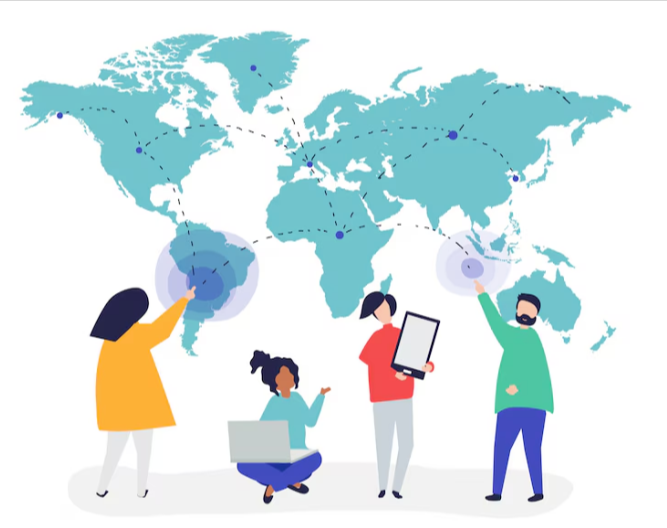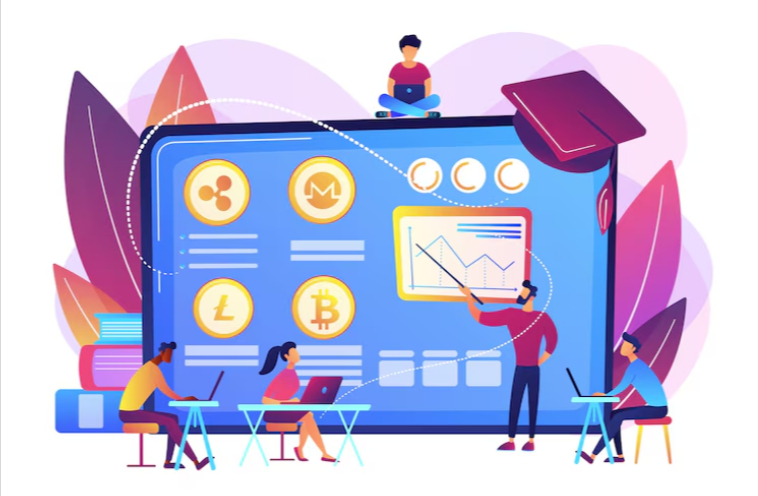The advantages and disadvantages of online learning became clearly visible when over 850 million students worldwide shifted to digital education during the COVID-19 pandemic.
My research on the advantages and disadvantages of online learning reveals that online education offers flexibility and cost savings, while also creating challenges such as social isolation and technical issues.
Understanding both sides helps make informed educational decisions. This analysis covers everything from the basic benefits to the disadvantages of online classes that students face worldwide.
Advantages & Disadvantages of Online Learning (Comparison Analysis)
Understanding the complete picture of online education advantages and disadvantages, materials, and research helps identify when digital learning works best.
Here is a breakdown of the most important differences between the two:
| Advantages | Disadvantages |
|---|---|
| Learn anywhere, anytime | Technical issues disrupt learning |
| Cost-effective education | Limited social interaction |
| Self-paced study options | Requires strong self-discipline |
| Better resource access | Infrastructure dependency |
| Enhanced digital skills | Practical skills challenging |
The effectiveness varies significantly based on subject matter, student personality, available infrastructure, and institutional support systems provided to learners.
10 Advantages of Online Classes
Let us look at the advantages first and how online learning is a boon:
1. Flexibility and Convenience
Online learning offers unmatched flexibility, enabling students to study from anywhere and at any time. This convenience eliminates geographical barriers, allowing working professionals to balance education with career responsibilities. Students can access recorded lectures, submit assignments, and participate in discussions according to their personal schedules without traditional classroom time constraints.

2. Cost-Effective Education
Digital learning significantly reduces educational expenses by eliminating costs associated with transportation, accommodation, and physical materials. Students save money on textbooks, campus facilities, and relocation expenses. Many online programs offer lower tuition fees compared to traditional classroom courses, making quality education more financially accessible to diverse populations.
3. Self-Paced Learning Experience
Online education enables students to progress at their own pace, reviewing challenging concepts multiple times or advancing quickly through familiar material. This personalized approach accommodates different learning styles and helps students achieve a deeper understanding without the time pressure of traditional classroom settings or peer competition.
4. Enhanced Digital Skills Development
Students naturally develop crucial technical skills as they navigate online learning platforms, utilize digital collaboration tools, and manage virtual assignments. These technical competencies become valuable assets in today’s technology-driven workplace, preparing learners for modern career demands and improving overall digital literacy for professional success.

5. Better Resource Access
Online platforms provide access to vast digital libraries, multimedia content, interactive simulations, and global expertise that traditional classrooms cannot match. Students can access recorded lectures repeatedly, download materials instantly, and utilize a variety of learning resources, including videos, podcasts, and interactive tools, for a comprehensive understanding.
6. Comfortable Learning Environment
Students can create personalized study spaces at home, reducing anxiety and distractions common in traditional classrooms. This comfortable environment enables learners to focus more effectively, wear comfortable clothing, take breaks as needed, and study in conditions that cater to their individual learning preferences and concentration levels.
7. Global Networking Opportunities
Online learning connects students with peers and instructors worldwide, creating diverse networking opportunities that transcend geographical boundaries. This global exposure enhances cultural understanding, provides international perspectives, and builds professional connections that can benefit career development and personal growth throughout life.

8. Immediate Feedback And Assessment
Digital platforms enable instant feedback through automated grading systems, quizzes, and interactive assignments. Students receive immediate results, enabling the quick identification of knowledge gaps and areas that need improvement. This rapid feedback loop accelerates learning progress and helps maintain motivation through continuous performance monitoring.
9. Environmental Benefits
Online education reduces its carbon footprint by eliminating daily commutes, reducing paper usage, and minimizing physical infrastructure requirements. This eco-friendly approach contributes to environmental sustainability while maintaining educational quality, making it an attractive option for environmentally conscious students and institutions committed to reducing their ecological impact.
10. Career Advancement Opportunities
Working professionals can pursue higher education without interrupting their careers, enabling them to develop skills simultaneously while gaining work experience. Online learning enables employees to acquire new qualifications, transition into new career paths, or advance in their current positions while maintaining their income and professional responsibilities, thereby creating valuable opportunities for career progression.

10 Disadvantages Of Online Classes
As per my research, these disadvantages significantly impact learning effectiveness and student satisfaction across different educational contexts and individual circumstances. Let us check each one of them out:
1. Limited Social Interaction
The lack of face-to-face communication creates feelings of isolation among students, which in turn reduces peer collaboration and networking opportunities. This social disconnect affects learning motivation and makes it challenging to build meaningful relationships with classmates and instructors, which are essential for comprehensive educational experiences and personal development.

2. Technical And Infrastructure Challenges
Reliable internet connectivity and adequate access to technology remain significant barriers, especially in developing regions. Students face disruptions due to poor internet speeds, device compatibility issues, and power outages. These technical problems interrupt learning continuity and create unequal educational opportunities based on economic circumstances.
3. Reduced Learning Quality for Practical Subjects
Hands-on subjects, such as medical training, laboratory sciences, and engineering, require physical practice that online learning cannot adequately provide. Students miss crucial practical experience, laboratory work, and clinical training that are essential for skill development in these professional fields, requiring tactile learning.
4. Self-Discipline and Motivation Challenges
Online learning requires high levels of self-motivation and effective time management skills, which many students struggle to maintain. Without structured classroom environments and direct supervision, learners often procrastinate, miss deadlines, and fail to consistently engage with course materials and assignments, resulting in poor academic performance.

5. Health and Wellness Concerns
Extended screen time can lead to physical health problems, including eye strain, poor posture, and reduced physical activity levels among students. Mental health challenges include increased anxiety, depression, and burnout from isolation and continuous digital engagement without adequate social interaction or physical movement opportunities.
6. Assessment Integrity Issues
Online assessments raise concerns about academic integrity, cheating prevention, and the fairness of evaluation methods. Traditional examination formats don’t translate effectively to digital platforms, creating difficulties in accurately measuring student knowledge and maintaining educational standards across different learning environments and student populations.
7. Limited Access to Support Services
Students often miss access to campus resources, such as libraries, counseling services, career guidance, and academic support, that traditional institutions typically provide. This limitation impacts student success rates and the overall educational experience, particularly for learners who require additional support or guidance throughout their academic journey.

8. Technology Dependency
Complete reliance on digital devices and internet connectivity creates vulnerability to technical failures that can disrupt education. Students without backup technology options or technical support face significant disadvantages when equipment fails, software malfunctions, or internet services become unavailable during critical learning periods.
9. Reduced Collaborative Learning
Group projects, peer discussions, and collaborative problem-solving become challenging in virtual environments. Students often miss out on spontaneous interactions, brainstorming sessions, and team-building experiences that enhance learning through diverse perspectives and collective knowledge sharing in traditional classroom settings.
10. Time Zone and Scheduling Conflicts
International online programs present challenges due to live sessions, group work, and instructor availability across different time zones. Students may miss important real-time interactions, face scheduling difficulties with global classmates, and struggle with synchronous learning activities that don’t accommodate their local time zones.

Regional Challenges Of Online Learning In Developing Nations
The advantages & disadvantages of online learning in developing nations present unique considerations due to diverse economic conditions, varying internet infrastructure, and cultural factors.

While urban students benefit from flexibility and cost savings, rural learners face connectivity issues and device accessibility problems that limit educational opportunities.

Many students struggle with consistent access to electricity, affordable high-speed internet, and family support in online learning environments.
However, online education has democratized access to quality courses from prestigious institutions, breaking geographical barriers that previously limited educational choices for many aspiring learners.
Health and Wellness Concerns Of Online Learning
Extended screen time creates physical health problems, including eye strain, poor posture, and reduced physical activity levels among students.

Mental health challenges include increased anxiety, depression, and burnout from isolation and continuous digital engagement without adequate social interaction or physical movement.
In a gist, Health-related disadvantages are:
- Eye strain from prolonged screen exposure
- Poor posture leads to back and neck problems
- Reduced physical activity causes fitness decline
- Mental health issues from social isolation
- Sleep disruption from excessive screen time
Online Learning Assessment And Evaluation Challenges
Online assessments raise concerns about academic integrity, cheating prevention, and fair evaluation methods.

Traditional examination formats don’t translate effectively to digital platforms, creating difficulties in accurately measuring student knowledge and maintaining educational standards across different learning environments.
Future Implications and Hybrid Solutions Of Online Learning
The evolution toward blended learning models combines the benefits of online flexibility with those of in-person interaction, addressing many disadvantages while preserving key advantages.

These hybrid approaches provide structured support, social connections, and practical training opportunities, complemented by digital convenience and accessibility.
Read More on Online Learning:
Conclusion: Online Learning Is Flexible, Affordable, But Is Exclusionary & Lacks Interaction
The advantages & disadvantages of online learning clearly show that digital education offers unprecedented flexibility, cost savings, and accessibility while presenting significant challenges in social interaction, technical infrastructure, and practical skill development.
Success depends on individual learning styles, available resources, and institutional support systems. While online learning democratizes access to education globally, it cannot completely replace the benefits of traditional classrooms, such as hands-on training and social connections.
The future lies in balanced hybrid models that maximize online convenience while addressing key disadvantages through strategic in-person components and enhanced digital support systems.
FAQs
A lack of direct interaction and potential for isolation are significant hurdles, negatively impacting student engagement, motivation, and the development of social skills essential for collaborative learning.
The positives are flexibility, accessibility, and self-paced learning. The negatives include a lack of direct interaction, technical issues, potential for isolation, and self-discipline requirements.
Cybersecurity risks, misinformation spread, addiction, reduced social interaction, and privacy concerns are key disadvantages.
Online learning suits self-motivated, organized individuals who are comfortable with technology and prefer independent work. If you prefer face-to-face interaction or struggle with self-discipline, it might not be for you.
Most employers value accredited online degrees equally to traditional ones, especially from reputable institutions. Focus on accreditation and skills; some fields may prefer hands-on experience.
Create a dedicated study space, establish routines, and actively participate. Communicate with instructors, use digital tools, and treat online courses with the same seriousness as traditional classes.
